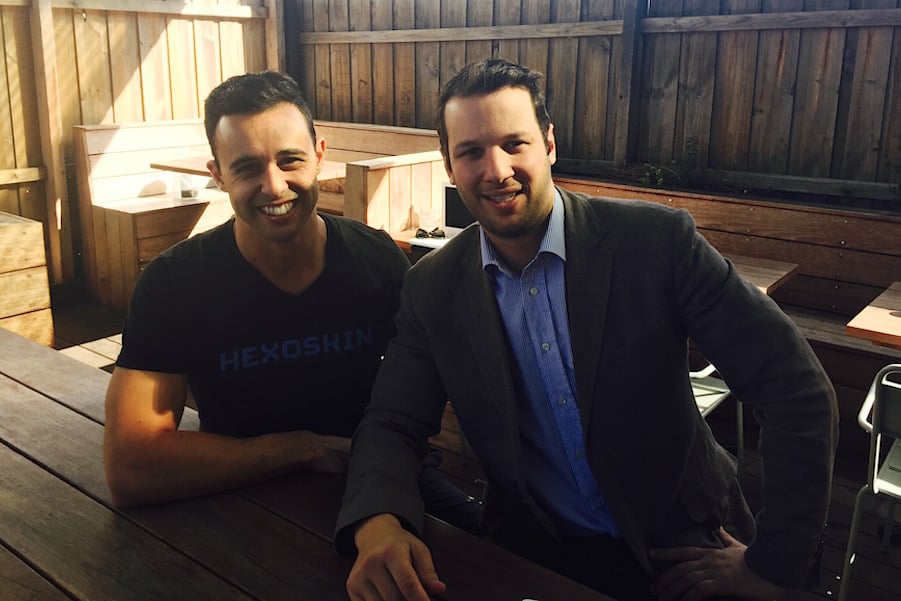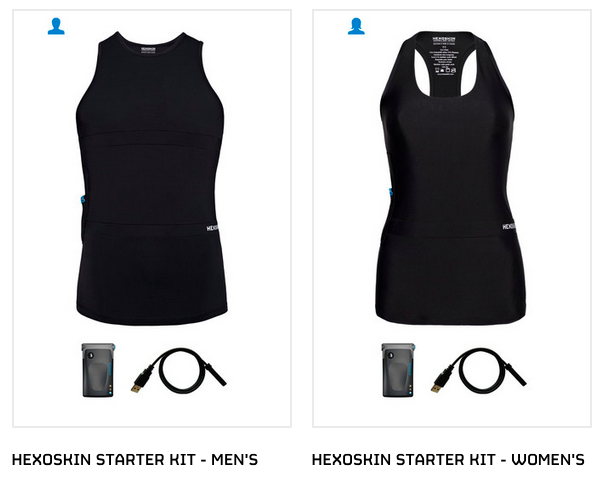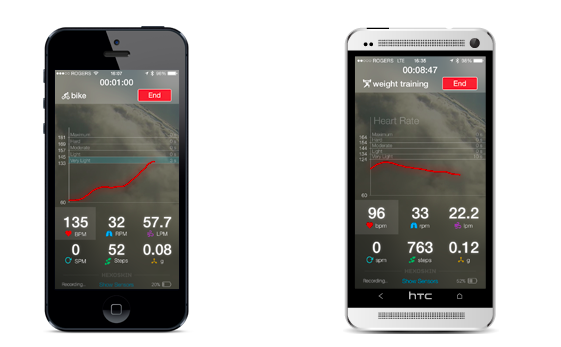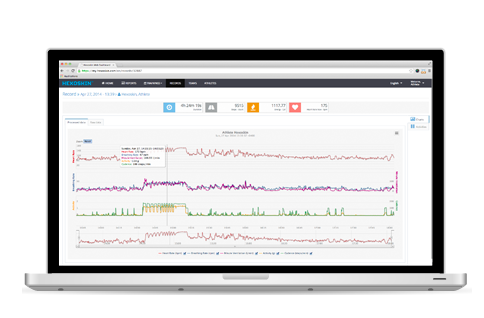As technology pervades every corner of our lives, we’re producing data at a rate never before imagined. According to IBM research, more than 2.5 quintillion bytes of data is generated each day; and analyst firm IDC estimates that all data created, replicated and consumed is doubling every two years. By 2020, it’s expected that there will be over 44 trillion gigabytes of digital data. But data is useless we’re able to understand it. It’s only in the past few years, that industries – from retail to health and fitness – have really begun to analyse big data and put it to productive use. One aspect if big data is lifestyle-based analytics (LBA). The ability to mine lifestyle-based data for specific variables that are indicative of a future health problem has allowed the healthcare and fitness industry to move from reactive mode to a proactive mode.
But where do consumers fit into the picture? Wearable technology has allowed consumers to aggregate their own data, enabling them to make better lifestyle decisions and be self-directed in their self-improvement journey. The rich data created by wearable technology is driving the rise of what Angus Dorney, Director and General of Rackspace Australia, once called the ‘human cloud’ of personal data”; and with this comes countless opportunities to tap into this data – whether it’s connecting with third parties to provide more tailored and personalised services or working closer with healthcare institutions to get a better understanding of their patients.
Although we’re still at the beginning of massive mainstream uptake of wearable devices, the technology itself is advancing fast. Take, for instance, Hexoskin, which is undoubtedly one of the most advanced wearable tech products to reach Australia. Although founded in North America, Melbourne-based entrepreneurs Dean Delia and Mark Milanese have been able to secure the rights to distribute Hexoskin’s products across the Asia-Pacific region.
Hexoskin’s biometric shirt may look like your average black tank top, but the inner lining of the shirt contains sensors that track an array of things like your heart rate in real-time, heart rate recovery, heart rate variability (an essential tool to measure stress and training fatigue), breathing rate, breathing volume, and real-time activity. It also monitors the quality of your sleep by capturing details like resting heart rate, breathing patterns, and sleep positions throughout the night. The sensors connect to a bluetooth recording device that sits neatly in the shirt’s side pocket. The data that is captured automatically uploads to Hexoskin’s servers; and users can login to their dashboard online to view their data, or download the Hexoskin mobile app for free on iTunes and Google Play.
Delia and Milanese have been friends for 15 years. Prior to pursuing Hexoskin, they were working on building a data analytics platform for sports professionals and were searching for wearable technologies that could be plugged into the platform. During their research, they stumbled upon Hexoskin and very quickly realised “it was the best thing on the market”. They secured the rights to distribute the company’s products late last year and launched Hexoskin Oceania in January.
Hexoskin’s local launch is timely, as there are two trends in Australia that are working against each other. First, health is becoming less a priority to Australians. According to VicHealth, less than one-third of Australians are getting sufficient exercise on a daily basis, which in turn is putting them at greater risk of illnesses that are preventable. Research indicates that tobacco smoking, excessive alcohol intake, high blood pressure, physical inactivity and obesity accounts for almost a third of Australia’s total burden of disease. In 2010, preventable conditions accounted for approximately 20 percent of Australia’s healthcare expenditure (around $24.3 billion).
At the same time, the cost of healthcare in Australia is increasing at 5.4 percent per year compared to annual GDP growth of around 3.1 percent, according to Professor Stephen Duckett, Director of the Health Program at Grattan Institute. We now spend more than $147.4 billion (2012-2013) on healthcare, which makes up about 9.5 percent of Australia’s GDP. However, this is about the OECD average; and Australia fares well, ranking the lowest among wealthy countries in the OECD database.
Regardless of how Australia ranks, startups in the private sector have the opportunity to play a significant and constructive role in health promotion – especially at a time when healthcare in Australia has been deemed unsustainable by the government.
Cognisant of this, Delia and Milanese decided now is an important time to bring Hexoskin into Australia.
“It’s pretty scary to think that two-thirds of Australians are overweight or obese. This is the biggest threat to public health […] and recreational sporting injuries cost the Australian healthcare industry over $2 billion a year. Imagine if sports professionals and everyday Australians who want to be more proactive about their health could use a product like [Hexoskin] to capture data and share it with coaches, trainers and physicians and be able to individualise their training and lifestyles to prevent injuries and health problems in the first place,” said Delia.
Although Hexoskin’s initial target market is professional athletes, Delia and Milanese believe Hexoskin appeals to all kinds of individuals.
“The early adopters are either aspiring or elite sports people. This is because elite sports people or their coaches are really forward thinking in regards to using technology in meaningful ways to improve performance. But to be frank, we see this as a product that has huge opportunity across different range of markets and customer profiles,” said Delia.
“Although we do work with the elite, we see this as a product that allows Australians to know about what’s going on in their bodies and use that information in ways that are meaningful to them. If you are a person with a heart condition, Hexoskin will allow you to know more and share more about your body and heart with your doctors. If you are working on reducing your weight, you can use Hexoskin track and monitor the process in meaningful ways. If you’re a 40-something year old guy realising you need to start taking care of yourself better, Hexoskin allows you a way to do that. If you’re a new mother who wants to start getting back to focusing on health, you can do that. There really is quite a range of opportunities here for us which is why we’re really excited.”
Delia also pointed that people tend to focus on exercise as key to living healthier and happier lives. But sleep is also vital to our survival and quality of life. In 2010, the total health care cost of sleep disorders was estimated to be $818 million in Australia. Perhaps what’s worse is that there’s compelling evidence of a causal relationship between sleep disorders and other illnesses and injuries.
“There really isn’t much focus on quality sleep. The thing that really appealed to us is the fact that Hexoskin allows us to learn much more about our sleeping patterns. Not only does it tell you how long you’ve slept, but how many times you’ve woken up throughout the night, how many times you’ve change positions, how long you’ve stayed in each position. It will give you a sleep efficiency rating and it’ll tell you how long you were in REM sleep and non-REM sleep. It’ll also give you the minute by minute readings for other metrics like your heart-rate, your breathing rate, your lung capacity, calories burnt,” said Delia.
“It gives you a holistic picture of what your sleep was like and you can start to see a very clear pattern on where you’re at and a different stimulus that adds to, or takes away from a good night’s sleep.
“We want to encourage people to get a better night’s sleep. That way, they can make the best of the time they are awake – good sleep reduces stress, allows people to train better and just live happier, more rested lives.”
At first glance, Hexoskin’s products may appear expensive. The starter kit, which includes a biometric shirt, bluetooth recording device and USB cable, costs $569. However, there are no recurring fees, as the Hexoskin app is free to use.
“It is an upfront investment, but the benefits are ongoing,” said Delia.
When you consider the amount of money we spend on healthcare, $569 is not a big investment to make if it means savings in the long run. In fact, it costs about the same as a six-month gym membership. The data analytics platform is also constantly becoming smarter, at no cost to the end-user. This means that Hexoskin’s value proposition becomes more and more compelling over time.
Moving forward, Delia and Milanese acknowledge that they need to educate the market about why certain metrics are important to monitor.
“Because there are so many different applications out there, the biggest challenge and opportunity for us is educating people on what Hexoskin is and why this is important. There are very few people who understand the importance of metrics like heart rate variability and VO2 max,” said Delia.
For the uninitiated, this could be perceived as a problem. What are you supposed to do with metrics you don’t understand? Although Hexoskin’s platform doesn’t offer actionable suggestions at the moment, if Delia and Milanese can educate Australians about the basics, some of the advanced metrics can be passed onto professionals who can then create personalised health and fitness plans for their patients or clients.
“We’re providing doctors with individualised data, so they’re able to not only treat but assess and prepare us in meaningful and personalised ways for preventative health. The wearable technology that’s currently out there is starting to educate the market, but where we’re going is really next level,” said Delia.
“It’s a great thing that Hexoskin’s technology can capture the level of detail that previously required us to go to a clinic and spend thousands of dollars on. The mobile app gives a really good snapshot of a range of different metrics and is quite user friendly; but the online dashboard gives you a granular level of detail. For many people, it will be more information than they’ve ever seen in their lives. If they have difficulty interpreting the data, they can share that information and give professionals a holistic view of where they’re at.”
Delia and Milanese is currently in talks with a number of universities as well as health, research and sports organisations to not only validate Hexoskin, but also to come up with ways to help educate the wider Australian population.
There is also opportunity for Hexoskin to partner with HR firms, as well as military and protective services. HR firms or HR departments in larger companies can partner with Hexoskin and offer a program to promote their employees’ health. It would make sense for corporations to invest in their employees’ health for the simple reason that good health can lead to better performance in the workplace, which ultimately works to the company’s advantage. Partnering with the Australian defence force and emergency services personnel is also an opportunity that Delia and Milanese are exploring, given the high level of performance that’s required of soldiers, police, etc.
Delia and Milanese also said that they’re looking to partner with AFL, NRL and other leagues; and is currently in the process of securing a partnership deal with Erebus Motorsport team.
As part of the company’s retail strategy, Delia and Milanese has secured a deal with Harvey Norman. Hexoskin’s biometric shirts are already available in over 60 Harvey Norman stores across the country. The duo is also planning to expand into Asia in the upcoming months.
It seems Delia and Milanese are set to replicate the success Hexoskin has experienced in North America in the Asia-Pacific region.























Trending
Daily startup news and insights, delivered to your inbox.